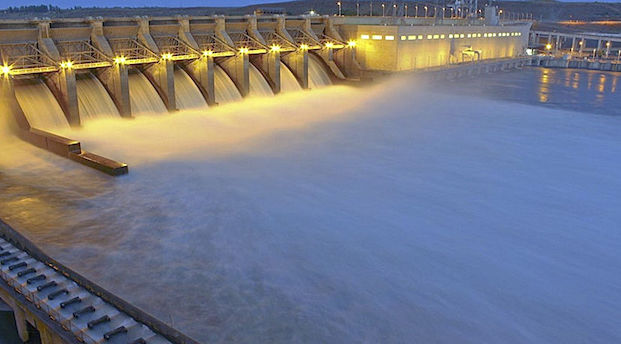forum
library
tutorial
contact

Breaching Snake Dams
Still Not a Good Option
by Editorial Board
Capital Press, August 13, 2020
|
the film forum library tutorial contact |

|
Breaching Snake Dams
by Editorial Board
|
The dams in southeast Washington generate electricity and allow farmers
to move grain by barge down the Columbia River's main tributary.
 Though hardly the last word on Lower Snake River dams, federal agencies with jurisdiction have affirmed in a final environmental impact statement that breaching four dams in Eastern Washington is a bad idea.
Though hardly the last word on Lower Snake River dams, federal agencies with jurisdiction have affirmed in a final environmental impact statement that breaching four dams in Eastern Washington is a bad idea.
We agree. Let the lawsuits continue.
The dams in southeast Washington generate electricity and allow farmers to move grain by barge down the Columbia River's main tributary.
Without the dams, the river would be too shallow to barge wheat and other farm goods the roughly 100 miles between Lewiston, Idaho, and the Tri-Cities. Lake Sacajawea, a reservoir created by Ice Harbor Dam, irrigates 47,000 acres. The loss of electricity generated by the dams would increase the cost of pumping groundwater.
In a ruling in December 2018, U.S. District Judge Michael Simon required the EIS as part of a lawsuit over protected fish species, including an alternative focused on removal of the four Snake River dams and their impacts.
In the final report, agencies rejected pleas from environmental and fishing groups to breach Lower Granite, Little Goose, Lower Monumental and Ice Harbor dams on the lower Snake River.
The report acknowledged that breaching the dams would do more for fish. But it also would damage the federal system's other uses, such as flood control, irrigation, navigation, recreation and electricity generation.
The agencies said they couldn't breach the dams unless Congress changed their mandate.
The report's "preferred alternative" on operating the system includes modifying some fish-passage structures and spilling more water over dams to benefit endangered runs of salmon and steelhead in the Lower Columbia and Snake rivers. That option for river management complies with President Trump's order to secure reliable water supplies in the West.
The final report mirrors the conclusions of a draft released in February. Outraged by the draft report, environmental and fishing groups renewed their opposition to the final EIS and urged Congress to intervene.
"The federal plan totally and completely fails Idaho and isn't good enough for the many guides, outfitters, river businesses and communities in Idaho that depend on healthy runs of fish," Idaho Conservation League executive director Justin Hayes said in a statement.
"The Trump administration's reckless rush to finalize the Columbia Basin hydropower review process is heartbreaking and immoral," said Natural Resources Defense Council senior attorney Giulia Good Stefani.
The final environmental impact statement lays the foundation for a decision next month on operating 14 federal dams on the Columbia and Snake rivers.
But this is no way the final word on the subject of dams on the Columbia-Snake system. Environmentalists and fishing groups won't stop litigating until the courts or Congress order the removal of the dams.
If they win, it will be at the expense of the entire region that depends on low-cost and reliable electricity the dams provide and the livelihoods of farmers, barge operators, deck hands, dock workers in the region and the vendors who support them.
learn more on topics covered in the film
see the video
read the script
learn the songs
discussion forum
